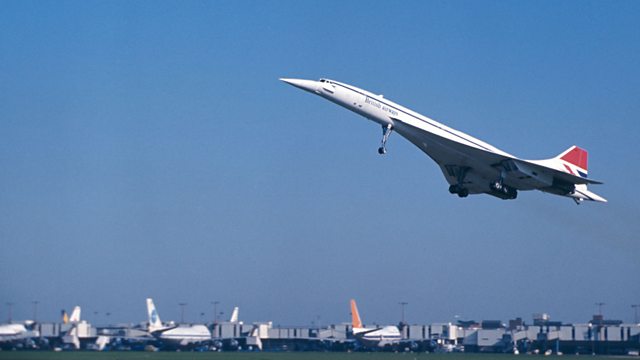Science in 2014
We look back through 50 years of archives and ask what 2015 promises for science.
In this special New Year’s Day broadcast, Science in Action delves back into its archives and looks ahead to new developments on some of the stories from previous years. Joining presenter Jack Stewart is science journalist and broadcaster Roland Pease.
Concorde and Quiet Landings
In 2014 we learnt a lot about how planes are tracked from the disappearance of Malaysian Airlines flight 370. Over the years we have reported on developments in aviation technology and many of these innovations came from Concorde. Air traffic control in use around the world has not changed significantly since Concorde, but it is about to. Advances are on the way to modernise routing of planes, which will mean they’re always tracked, and problems can be spotted long in advance. Dr Wolfgang Schuster, the director of the Air Traffic Management and Intelligent Transport Systems Groups at Imperial College, London explains more.
Chernobyl
In 1986 one of the four nuclear reactors in Chernobyl exploded. After the meltdown at reactor number 4, the surrounding area was evacuated. A 30km exclusion zone remains in place – and almost all humans have left. The wildlife didn’t leave though, and scientists have been monitoring how plants and animals have been coping in one of the most contaminated places on Earth. In 2014, 28 years on, the exclusion zone is still bereft of human life but some parts have been over-run by wildlife. Professor Tim Mousseau from the University of South Carolina, in the US, has been studying the effects for many years and told us about the first direct evidence that wild animals can adapt to high levels of radiation.
Severed Fingers and Spines
In June 1968, Science in Action reported on a new technique for rejoining fine blood vessels, a ground-breaking discovery in the 1960s. Since then surgical techniques have certainly moved on. This year, for example, doctors in Poland worked with British scientists to help a paralysed man walk again. Their pioneering therapy involved transplanting cells from his nose to help the nerve cells in his spine renew and repair themselves. Professor John Haycock, Director of the Centre for Biomaterials and Tissue Engineering at the University of Sheffield in the UK, comments.
Climate Change
In the 50 years of Science in Action broadcasts, climate change has made many, sometimes controversial, appearances. We look back on the outcomes of the Kyoto Protocol, which was signed in 1997. A week-long slog of meetings between 160 governments worldwide resulted in developed countries pledging to reduce emissions by an average of 5% in the period 2008- 2012. Roland Pease offers insights into how our scientific understanding of climate change has developed since then and how far we have come in reaching reduction targets. 91�ȱ� Environment Reporter, Navin Singh Khadka also brings the latest from the most recent United Nations Climate Change Conference in Lima, Peru.
(Image: British Airways Concorde taking off from Heathrow Airport, February 1976)
Presenter: Jack Stewart
Producer: Ania Lichtarowicz
Last on
More episodes
Previous
Next
Chapters
-
Concorde and Quiet Landings
Advances in aviation since Concorde
Duration: 08:05
Chernobyl
Life in the Chernobyl exclusion zone
Duration: 07:02
Severed Fingers and Spines
World firsts in surgery
Duration: 04:57
Climate Change
What 2015 holds for climate talks
Duration: 04:10
Broadcasts
- New Year's Day 2015 19:32GMT91�ȱ� World Service Online
- Fri 2 Jan 2015 00:32GMT91�ȱ� World Service Online
- Fri 2 Jan 2015 04:32GMT91�ȱ� World Service Online
Podcast
-
![]()
Science In Action
The 91�ȱ� brings you all the week's science news.


